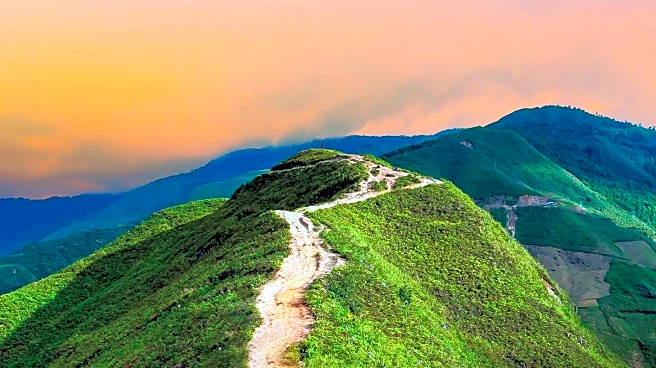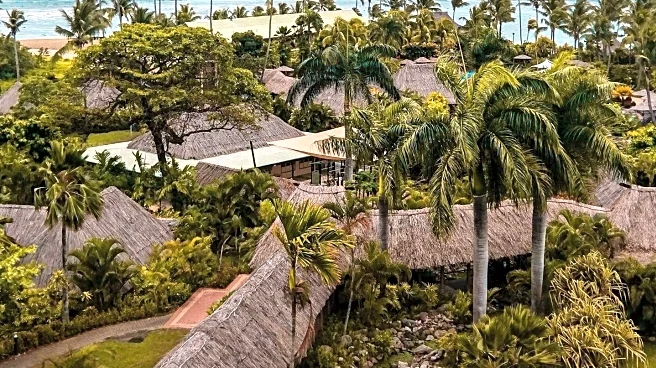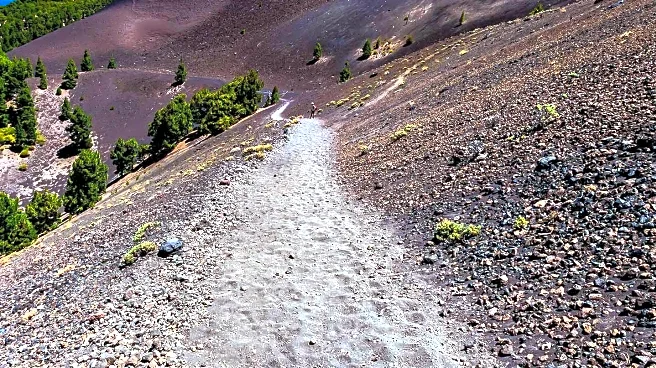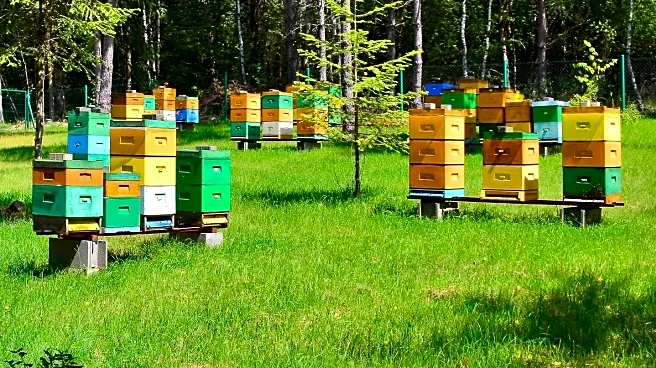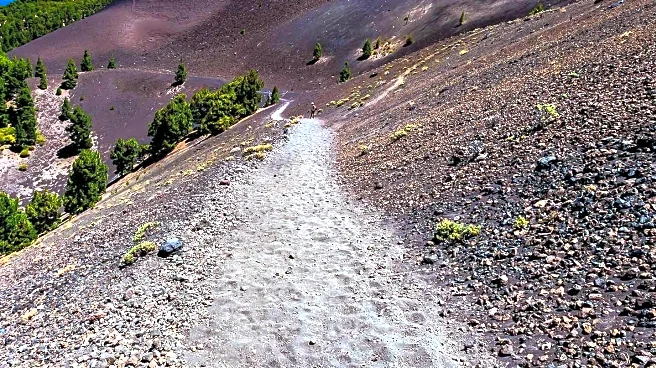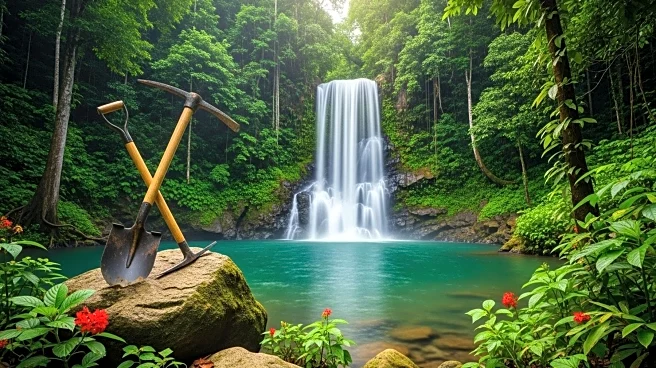What is the story about?
What's Happening?
Trail running enthusiasts are experiencing both challenges and rewards as they navigate the Pacific Crest Trail (PCT). The journey, spanning several days, involves overcoming physical obstacles such as ankle pain and blisters, while also enjoying the natural beauty and wildlife along the trail. Hikers are dealing with issues like improper waste disposal near water sources, which violates Leave No Trace (LNT) principles. Despite these challenges, the camaraderie among hikers and the opportunity to witness vibrant wildlife, such as butterflies and quail, provide a sense of fulfillment. The trail offers a mix of downhill and uphill terrains, requiring hikers to adapt to varying conditions, including exposed crest walks and dense forests. The experience is marked by both physical endurance and moments of relaxation, such as resting at campsites with amenities like Wi-Fi and showers.
Why It's Important?
The Pacific Crest Trail represents a significant challenge for trail runners, highlighting the importance of adhering to environmental standards like Leave No Trace (LNT) to preserve natural habitats. The trail's demanding conditions test the physical and mental resilience of participants, offering insights into the broader appeal of trail running as a sport that combines adventure with environmental consciousness. The experiences shared by hikers underscore the need for proper preparation and respect for nature, which are crucial for sustainable outdoor activities. This narrative also emphasizes the role of community and shared experiences in enhancing the trail running journey, fostering a sense of belonging and mutual support among participants.
What's Next?
As trail running continues to gain popularity, there may be increased efforts to educate participants on environmental stewardship and proper trail etiquette. Organizations and trail management bodies could implement more stringent measures to ensure compliance with LNT principles, potentially involving more signage and educational programs. Additionally, advancements in trail running gear and technology may help mitigate physical challenges, such as improved footwear to prevent blisters and injuries. The growing interest in trail running might also lead to more organized events and support networks, enhancing the overall experience for enthusiasts.
Beyond the Headlines
The Pacific Crest Trail experience highlights deeper implications regarding the balance between outdoor recreation and environmental conservation. As more people engage in trail running, there is a need to address the impact of human activity on natural ecosystems. This situation calls for a cultural shift towards greater environmental awareness and responsibility among outdoor enthusiasts. The narrative also reflects broader societal trends towards seeking adventure and connection with nature, which can influence public policy and community initiatives aimed at preserving natural landscapes.
AI Generated Content
Do you find this article useful?
